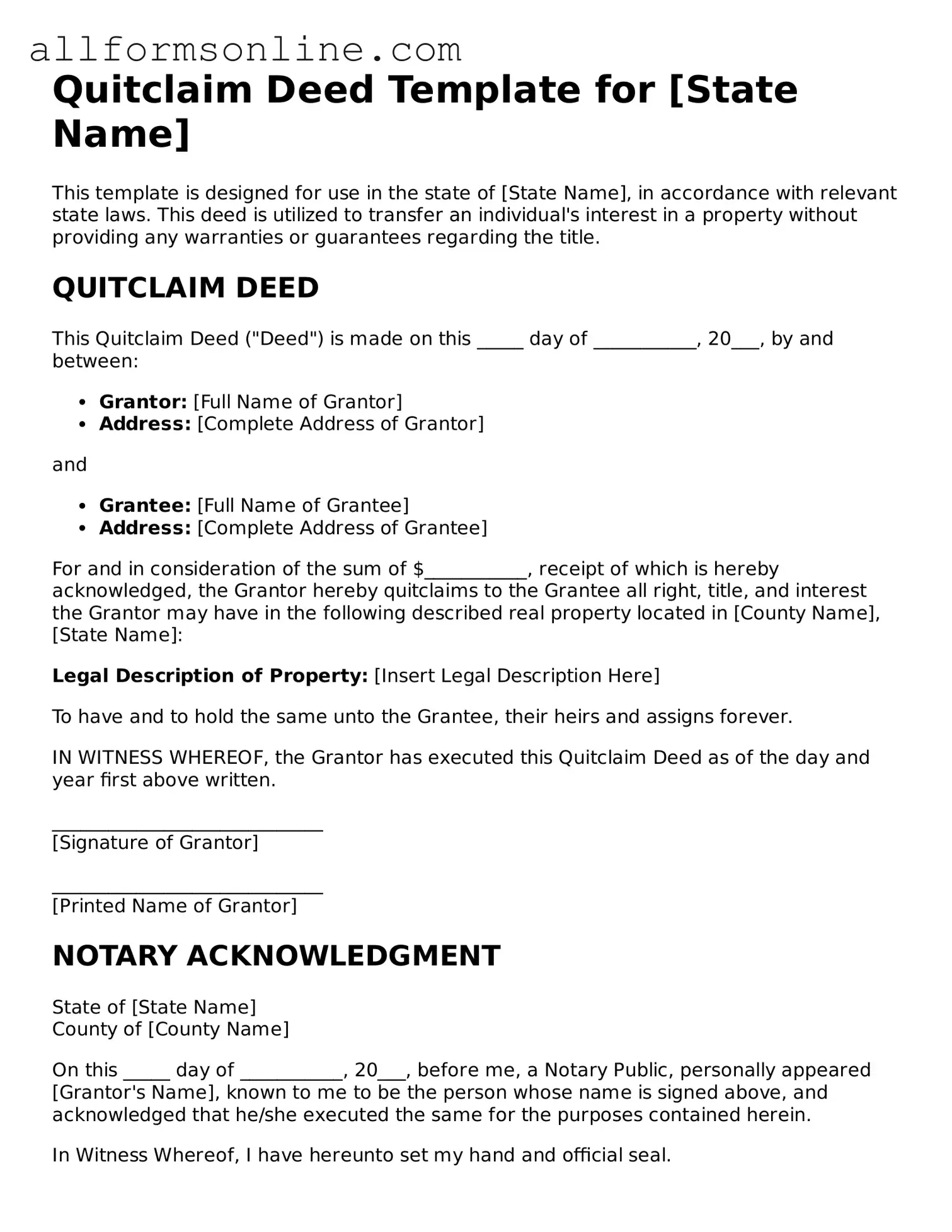What is a Quitclaim Deed?
A Quitclaim Deed is a legal document that transfers ownership interest in a property from one party to another. Unlike a warranty deed, it does not guarantee that the property title is free of claims or liens. Essentially, the person transferring the property, known as the grantor, relinquishes any rights they may have in the property, but they do not guarantee those rights are valid. This type of deed is often used between family members or in situations where the parties know each other well.
When should I use a Quitclaim Deed?
You might consider using a Quitclaim Deed in several scenarios. Common situations include transferring property between family members, adding or removing a spouse from a title after marriage or divorce, or clearing up title issues. It is important to note that this deed is not suitable for transactions involving a sale or purchase where the buyer needs assurance about the property's title.
What information is required on a Quitclaim Deed?
A Quitclaim Deed typically requires several key pieces of information. You will need the names and addresses of the grantor and grantee, a legal description of the property, and the date of the transfer. Additionally, you may include the consideration, or the amount paid for the property, although this is not always necessary. Ensure that the document is signed by the grantor and notarized to make it legally binding.
Do I need to file the Quitclaim Deed with the county?
Yes, it is essential to file the Quitclaim Deed with the appropriate county office, usually the county recorder or clerk's office, where the property is located. Filing the deed creates a public record of the transfer, which protects the rights of the grantee and provides notice to third parties about the new ownership. Failing to file could lead to disputes over property ownership in the future.
Are there any tax implications when using a Quitclaim Deed?
There can be tax implications when using a Quitclaim Deed, especially if the transfer involves a significant value. Depending on your state laws, you may need to pay transfer taxes or document fees. Additionally, the transfer could affect property tax assessments. It is advisable to consult a tax professional to understand how the transfer may impact your tax situation.
Can I revoke a Quitclaim Deed once it is executed?
Once a Quitclaim Deed is executed and filed, it generally cannot be revoked unilaterally. The grantor has given up their rights to the property, and the grantee now holds the interest. However, in some cases, it may be possible to create a new deed to transfer the property back to the grantor, but this requires mutual agreement between both parties. Legal advice should be sought if there is a need to reverse the transfer.
Is it advisable to use a lawyer when preparing a Quitclaim Deed?
While it is possible to prepare a Quitclaim Deed without legal assistance, consulting a lawyer is highly advisable. A legal professional can ensure that the deed is properly drafted, meets all state requirements, and is executed correctly. This step can help prevent future disputes and ensure that all parties understand their rights and obligations. Investing in legal guidance can save time and resources in the long run.
